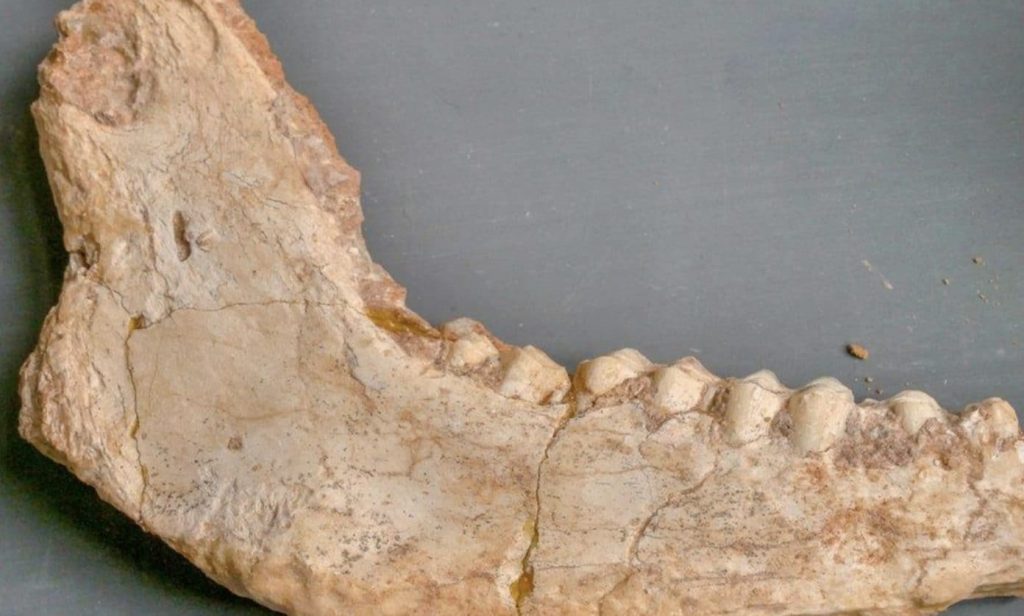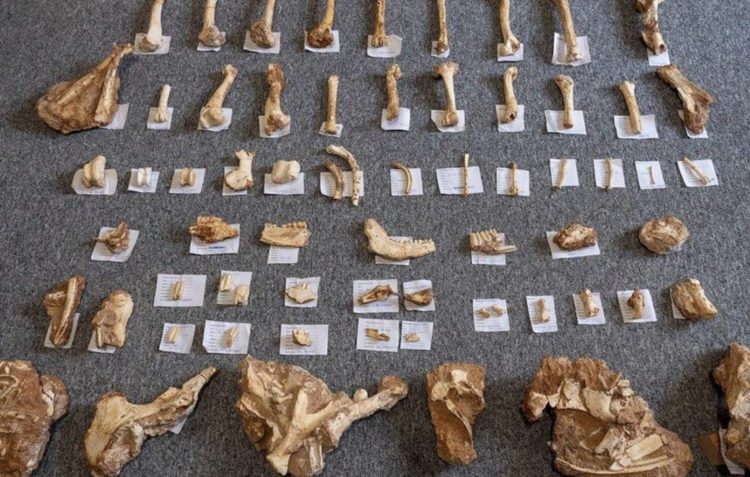Two-million-year-old fossils were recently discovered in the Petrified Forest on the Greek island of Lesvos, indicating that horses, cattle, deer, and antelope formerly grazed its green slopes.
In a recently completed archaeological dig, the bones of these and other smaller animals, such as lagomorphs that resemble modern rabbits, were found at the site near Thermi on the eastern side of the island. Huge petrified woods may be found on the western side of Lesvos, and mineralized logs from those times are frequently discovered there.
This focuses special emphasis to Greek Island of Lesvos’ eastern region and transforms the island into something like to a Jurassic Park, featuring all the native flora and fauna. The numerous varieties of trees whose remnants were petrified because of ash that fully covered them after they had been killed by blasts from volcanic eruptions are on display in the Museum of Natural History of the Petrified Forest of Lesvos.
Two-million-year-old fossils only the most recent ancient finds on Lesvos, the island of the petrified forest
The investigation, conducted by researchers affiliated with the Museum of Natural History of the Petrified Forest of Lesvos, began in November 2019 and has already been finished, despite the numerous obstacles caused by the pandemic.
According to Nikos Zouros, director of the Museum of Natural History of the Petrified Forest of Lesvos and professor at the University of the Ege, “the research revealed hundreds of vertebrate bones that lived in Greek Island of Lesvos during the geological period of the lower Pleistocene, that is, about two million years ago.”
The rich material of the paleontological excavations under research, according to Zouros, “testifies to the richness of the island’s fauna, provides key facts about the fauna and ecosystems of the Eastern Aegean, and the relationship of the islands with the nearby Asia Minor peninsula.”
More than 500 different fossil specimens
The excavations uncovered roughly 500 recognized specimens as well as many more remains from unidentified species.
The fresh dig was launched in response to the discovery of the first fossil in sedimentary rocks on Lesvos’ eastern side. “It was a jaw piece that had a small bit of the denture and probably belongs to a small antelope,” Zouros told reporters, “and an exploratory inquiry was then begun to investigate if there were any other fossils.”
“Fragments of fossilized bones were discovered in the sediments, as well as the existence of massive tectonic cavities generated in the limestone rocks and later filled with fossilized sediments,” Zouros revealed. Some fossils were so sensitive that researchers had to assemble the pieces in the field.



This encouraged researchers to devise a strategy for systematic excavation at the primary fossil site. Meanwhile, they continued to sift through the sediments in the hopes of finding micro-fossils.
Scientists quickly discovered “huge slabs of osteological material,” which they believe formerly traveled downward from a higher position at the site. The existence of a layer of petrified bones was eventually disclosed, according to Zouros.
“The first fossils discovered were the remains of big ungulate mammals, primarily antelopes” (characterized by an even number of fingers on the hooves, usually two or four). “The bones were in poor condition, as most of them had decomposed due to the increased humidity,” he explained.
Excavations started up in June 2021, when the most essential phase of the systematic work focused on the central part of the layer, where an increased accumulation of fossil bones was observed. “The dense concentration of bones in the sediment and their burial without a specific orientation, has often led to the redefinition of the excavation methodology in order to recover the fossils more safely,” Zouros explained to reporters.
According to him, “the dense concentration of the bones made the excavation exceedingly difficult, since the work had to go at a very slow speed in order to avoid causing damage [, as] the notably reduced strength of the fossils needed cautious and exact labor.”
Because of this, skilled conservationists from the Museum of Natural History of the Petrified Forest of Lesvos worked on the majority of the osteological material on-site. This included fusing the most delicate parts together in place before they could be excavated.
In cases where the high concentration of bones acted as a deterrent to the individual extraction of fossils, “fossil blocks” were created, which were taken out as a whole and processed in the laboratories of the Museum.
The abundance of materials found during the excavation period mostly comprised of mammalian bones, the majority of which were elongated bones, however there were no smaller mammals’ skulls or jaws to be found. All of the identified specimens were eventually taken out of the stratum and moved to the Museum’s labs.
